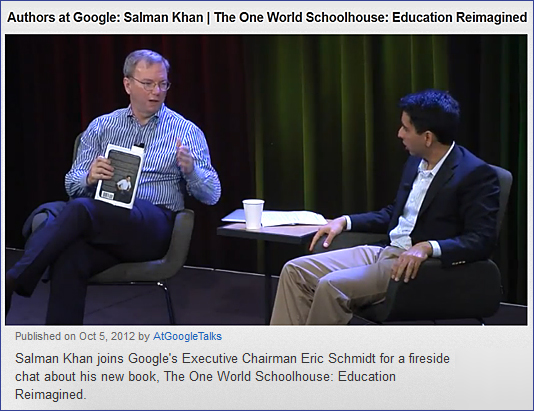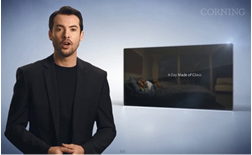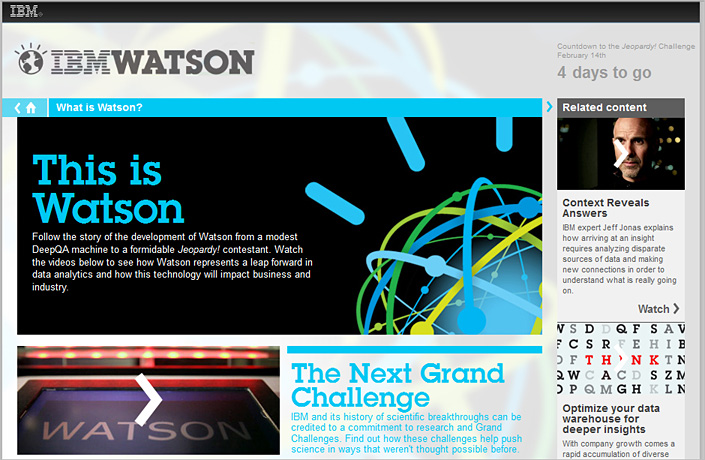The need for more experimentation, innovation within higher education.
By Daniel Christian for the CHFE12 MOOC
Last week, I attended the 18th Annual Sloan Consortium on Online Learning in Orlando, FL (USA). After hearing Sebastian Thrun’s excellent keynote address, I was very troubled by a couple of questions that kept arising in my mind (which I’ll get to in a minute). It turns out that Sebastian had heard Sal Kahn at a TED talk a while back, where he learned of the impact that Sal was having and the pedagogy Sal was using.
Now bear in mind that Sal was not in education. He was working in the financial services industry, putting together training-related items for his nephews/family members.
Then bear in mind that Sal Kahn has arguably had one of the most significant impacts on K-12 of any individual in recent decades – and even on institutions of higher education (in terms of professors investigating or starting to use the flipped/inverted classroom model).
Then bear in mind that Sebastian Thrun didn’t run his idea by anyone in Stanford’s administration! His email out to some folks started going viral, and within days the enrollment numbers were already in the thousands. (And at that point he got asked to drop by his Admin’s offices! 🙂 I wonder what would have happened if Sebastian would have first asked Stanford’s leadership for permission…? It may never have occurred.)
Sebastian’s and Peter Norvig’s AI course went onto graduate 23,000 people (with an initial enrollment around 160,000). Then, there’s the related Coursera organization/endeavor — again, a business that needed to be created outside of the traditional institutions of higher education.
So, recapping things:
- Sebastian didn’t run things by anyone in his administration
- He ended up needing to create his own company – outside of traditional higher ed (Udacity)
- He was significantly influenced by someone completely outside of education
- Coursera and Udacity operate outside the policies and procedures of traditional institutions of higher education
So, the following two questions arose in my mind last week:
- Why didn’t these innovations come from – or why weren’t they developed within – traditional institutions of K-12/higher education?
- Why did such influence have to occur – in great part – from outside of “the established systems”?
Any answer to these questions is troubling to me. But one plausible explanation involves leadership. Many of our leaders in higher education did not grow up with the Internet and with LANs, WANs, HTTP protocols, etc. They didn’t grow up using the tools that today’s youth are using.
As such, they don’t always appreciate the power and potential of technology. I don’t mean to point fingers and play a blame game here. That’s not the point. The point is, leaders are people with finite gifts and abilities. Like all of us, they have been shaped by their experiences and they, too, have their histories. They were moved into their positions of responsibility due to the needs of of the institutions at certain points in time. But the needs of those institutions have since changed.
The problem is, those in key leadership positions will either need to:
- Quickly come to appreciate the disruptive, powerful impact that technologies can have (i.e. be sold on them) and strategize accordingly
and/or
- Find other positions (which most likely won’t be happening if normal self-preservation tendencies/principles of power continue to occur)
Blockbuster comes to mind as an organization that was once dominant, but disregarded the disruptive impact of technology and eventually had to declare bankruptcy. One can think of other examples from other industries as well (can’t we Kodak? Borders?).
Such reflections were reinforced when I read Selingo’s (2012) article from earlier today where he wrote, “It’s clear to me that the needed reforms for student financial-aid are unfortunately not going to come from higher education. Many financial-aid officials remain opposed to the model letter, as well as many other regulations.”
Like Selingo, I don’t see change coming from within the current system. I hope that I’m sorely mistaken here, but from the pulse checking I’ve been doing, the conversation seems to be continuing to move away from traditional institutions of higher education (example here and another example here). I hope that we can pick up the pace of experimentation within our organizations to find ways to lower the costs while still providing effective means of educating people.
—
Selingo, J. (2012, October 15). In a Broken Student Aid System, Colleges Are Part of the Problem. In The Quick and the Ed. Retrieved from http://www.quickanded.com/2012/10/in-a-broken-student-aid-system-colleges-are-part-of-the-problem.html
—
Addendum/also see:












![The-Living-Class-Room-Daniel-S-Christian---July-2012 The Living [Class] Room -- by Daniel Christian -- July 2012 -- a second device used in conjunction with a Smart/Connected TV](http://danielschristian.com/learning-ecosystems/wp-content/uploads/2012/07/The-Living-Class-Room-Daniel-S-Christian-July-2012.jpg)




![HigherEducationNowAtBat--DanielChristian Higher education used to be on deck, but is now at bat. [Christian]](http://danielschristian.com/learning-ecosystems/wp-content/uploads/2012/09/HigherEducationNowAtBat-DanielChristian1.jpg)
![TheSiegeOfAcademy-Sept2012 The Washington Monthly - The Magazine - The Siege of Academe [Kevin Carey]](http://danielschristian.com/learning-ecosystems/wp-content/uploads/2012/08/TheSiegeOfAcademy-Sept2012.jpg)


